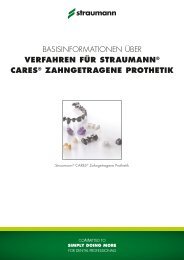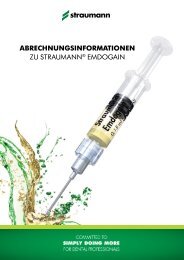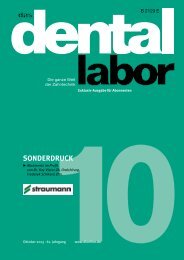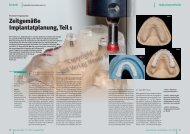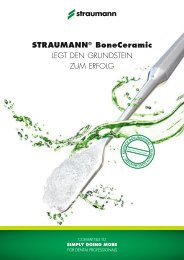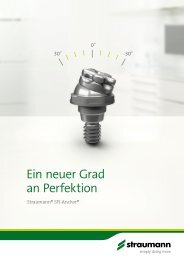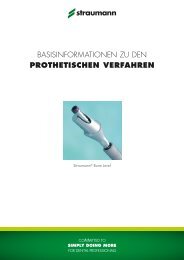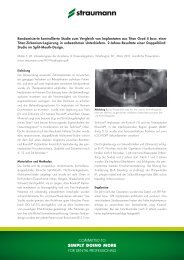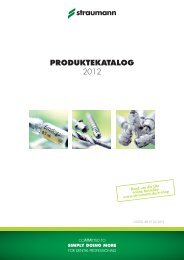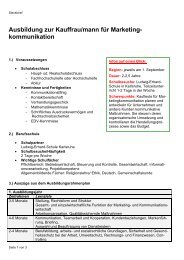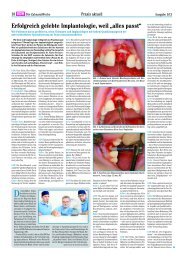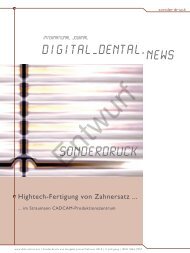Accuracy of a manual torque application device for morse-taper ...
Accuracy of a manual torque application device for morse-taper ...
Accuracy of a manual torque application device for morse-taper ...
Create successful ePaper yourself
Turn your PDF publications into a flip-book with our unique Google optimized e-Paper software.
<strong>Accuracy</strong> <strong>of</strong> a <strong>manual</strong> <strong>torque</strong> <strong>application</strong> <strong>device</strong> <strong>for</strong> <strong>morse</strong>-<strong>taper</strong> implants: a<br />
technical note.<br />
Int J Oral Maxill<strong>of</strong>ac Implants. 2004 Sep-Oct;19(5):743-8.<br />
Cehreli MC, Akça K, Tönük E.<br />
Abstract<br />
PURPOSE: The objective <strong>of</strong> this study was to compare <strong>torque</strong>s applied by new and used<br />
<strong>manual</strong> <strong>torque</strong> <strong>device</strong>s <strong>for</strong> Morse-<strong>taper</strong> implants.<br />
MATERIAL AND METHODS: Fifteen ITI <strong>manual</strong> <strong>torque</strong> <strong>device</strong>s were tested. Those in group<br />
1 (n = 5) were new (ie, never used), those in group 2 (n = 5) had been used 50 to 200 times,<br />
and those in group 3 (n = 5) had been used 500 to 1,000 times. The <strong>torque</strong>s applied by each<br />
<strong>device</strong> were measured <strong>for</strong> 35 Ncm and 15 Ncm targets in an experimental setup by a<br />
custom-made wrench with strain gauges connected to a data acquisition system. The straingauge<br />
signals were simultaneously delivered to a computer at a sample rate <strong>of</strong> 10,000 Hz<br />
and converted to <strong>torque</strong> units.<br />
RESULTS: New <strong>device</strong>s applied higher <strong>torque</strong>s than used <strong>device</strong>s <strong>for</strong> the 35-Ncm <strong>torque</strong><br />
target (P < .05). The <strong>torque</strong>s applied by group 3 <strong>device</strong>s were approximately 1.5 Ncm lower<br />
than those <strong>of</strong> other groups <strong>for</strong> the 35-Ncm target and approximately 1 Ncm lower <strong>for</strong> the 15-<br />
Ncm target.<br />
DISCUSSION AND CONCLUSION: ITI <strong>manual</strong> <strong>torque</strong> <strong>device</strong>s deliver consistent <strong>torque</strong><br />
output, although a slight decrease occurs as a consequence <strong>of</strong> clinical use.<br />
Torque generated by handheld screwdrivers and mechanical torquing <strong>device</strong>s<br />
<strong>for</strong> osseointegrated implants.<br />
Int J Oral Maxill<strong>of</strong>ac Implants. 1994 Mar-Apr;9(2):149-55.<br />
Goheen KL, Vermilyea SG, Vossoughi J, Agar JR.<br />
Abstract<br />
This study evaluated the ability <strong>of</strong> practitioners experienced in the use <strong>of</strong> Brãnemark implant<br />
components to impart a desired <strong>torque</strong> using handheld screwdrivers. The <strong>torque</strong> output and<br />
variability <strong>of</strong> mechanical <strong>torque</strong> <strong>device</strong>s was also examined. For clinicians using handheld<br />
screwdrivers, values ranged from 0.7 to 18.1 Ncm, 1.4 to 33.7 Ncm, and 8.2 to 36.2 Ncm <strong>for</strong><br />
the 10-Ncm, 20-Ncm, and 32-Ncm <strong>torque</strong>s respectively. The <strong>manual</strong>ly operated mechanical<br />
torquing <strong>device</strong>s produced <strong>torque</strong> values within the tolerances specified by their respective<br />
manufacturers at all levels. Significant variation from the manufacturer's set values were<br />
noted as a function <strong>of</strong> tightening speed with the electronic torquing <strong>device</strong>. The data indicate
that there is wide variation in the ability <strong>of</strong> clinicians to perceive adequate torquing <strong>for</strong>ces<br />
applied to implant components. Calibrated torquing <strong>device</strong>s are mandatory if proper torquing<br />
procedures are to be accomplished.<br />
The change <strong>of</strong> rotational freedom following different insertion <strong>torque</strong>s in three<br />
implant systems with implant driver.<br />
J Adv Prosthodont. 2009 Mar;1(1):37-40. Epub 2009 Mar 31.<br />
Kwon JH, Han CH, Kim SJ, Chang JS.<br />
Abstract<br />
STATEMENT OF PROBLEM: Implant drivers are getting popular in clinical dentistry. Unlike<br />
to implant systems with external hex connection, implant drivers directly engage the<br />
implant/abutment interface. The de<strong>for</strong>mation <strong>of</strong> the implant/abutment interface can be<br />
introduced while placing an implant with its implant driver in clinical situations.<br />
PURPOSE: This study evaluated the change <strong>of</strong> rotational freedom between an implant and<br />
its abutment after <strong>application</strong> <strong>of</strong> different insertion <strong>torque</strong>s.<br />
MATERIAL AND METHODS: Three kinds <strong>of</strong> internal connection implants were utilized <strong>for</strong> the<br />
current study (4.5 × 12 mm Xive, 4.3 × 11.5 mm Inplant Magicgrip, 4.3 × 12 mm Implantium<br />
MF). An EstheticBase, a 2-piece top, a Dual abutment was used <strong>for</strong> its corresponding<br />
implant system. The rotational freedom between an implant and its abutment were measured<br />
be<strong>for</strong>e and after applying 45, 100 Ncm insertion <strong>torque</strong>. Repeated measures ANOVA was<br />
used <strong>for</strong> statistical analysis.<br />
RESULTS: Under 45 Ncm insertion <strong>torque</strong>, the rotational freedom between an implant and<br />
its abutment was significantly increased in Xive (P = .003). However, no significant change<br />
was noted in Inplant Magicgrip and Implantium MF. Under 100 Ncm <strong>torque</strong>, both in Xive (P =<br />
.0005) and Implatium MF (P = .03) resulted in significantly increased rotational freedom<br />
between the implant and its abutment.<br />
DISCUSSION: The design <strong>of</strong> the implant/implant driver interface effectively prevented the<br />
de<strong>for</strong>mation <strong>of</strong> implant/abutment interface. Little change was noted in the rotational freedom<br />
between an implant and its abutment, even though the insertion <strong>torque</strong> was far beyond<br />
clinical <strong>application</strong>.<br />
CONCLUSIONS: The implant/abutment joint <strong>of</strong> internally connecting implants were quite<br />
stable under insertion <strong>torque</strong> in clinical situation
Comparison <strong>of</strong> <strong>torque</strong> measurements and clinical handling <strong>of</strong> various surgical<br />
motors.<br />
Int J Oral Maxill<strong>of</strong>ac Implants. 2009 May-Jun;24(3):469-76.<br />
Neugebauer J, Scheer M, Mischkowski RA, An SH, Karapetian VE, Toutenburg H, Zoeller<br />
JE.<br />
Abstract<br />
PURPOSE: Modern implant dentistry requires the <strong>application</strong> <strong>of</strong> <strong>torque</strong> during various<br />
treatment steps. This study investigated seven different surgical motors <strong>for</strong> the accuracy <strong>of</strong><br />
the applied <strong>torque</strong> and their reliability.<br />
MATERIALS AND METHODS: The following surgical motors were evaluated: Chiropro 980<br />
(Bienair), INTRAsurg 300 and INTRAsurg 500 (KaVo), Osseocare (Nobel Biocare), Surgic<br />
XT (NSK), Elcomed SA-200 C (W and H), and Osseo System (XO Dentalcare). The <strong>torque</strong><br />
was measured during typical surgical and prosthetic procedures using a special load transfer<br />
mechanism <strong>for</strong> a <strong>torque</strong> gauge. For each setting, 30 measurements were made and means<br />
were calculated.<br />
RESULTS: The highest percentage shortfall was 20.5% at a set <strong>torque</strong> <strong>of</strong> 11.4 Ncm<br />
(absolute deviation <strong>of</strong> -2.4 Ncm). The highest percentage by which a <strong>torque</strong> was exceeded<br />
was 54.6% (absolute deviation <strong>of</strong> 5.5 Ncm). The lowest value <strong>for</strong> absolute shortfall was found<br />
to be -5.6 Ncm at a set <strong>torque</strong> <strong>of</strong> 45 Ncm. The highest absolute exceeded was 15 Ncm at a<br />
set <strong>torque</strong> <strong>of</strong> 40 Ncm. Potentially problematic <strong>torque</strong> values were identified in the low-<strong>torque</strong>value<br />
setting, as the implant position may be changed if a machine driver applies excessive<br />
<strong>torque</strong> to the first-stage healing screw. In addition, in the indication <strong>of</strong> immediate loading in<br />
the high-set-<strong>torque</strong> group, <strong>torque</strong> values above the critical value <strong>of</strong> 50 Ncm may be<br />
unwittingly applied while working with a set <strong>torque</strong> <strong>of</strong> 40 Ncm.<br />
CONCLUSION: For most <strong>of</strong> the clinically relevant <strong>torque</strong> settings, precise values were<br />
measured, although a few <strong>device</strong>s delivered potentially problematic <strong>torque</strong> values <strong>for</strong> some<br />
<strong>of</strong> the indications.



